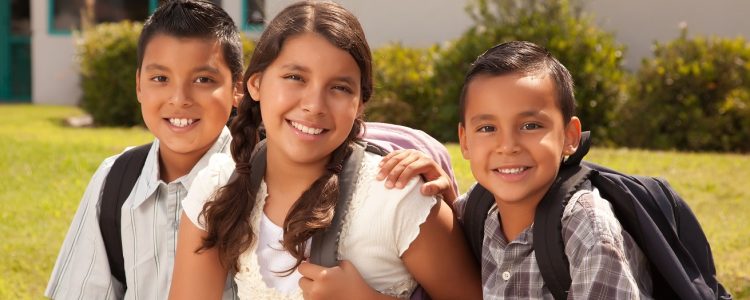The recent outbreak of COVID-19 may be causing families to feel many strong emotions, such as helplessness, fear or worry. It can be an overwhelming time for many parents and caregivers, including those who are continuing to work without child care, working from home with children or may have been recently laid off.
Children look to adults for guidance on how to react to stressful events. Although we may not realize it, children and teens are able to sense and feel our emotions – good and bad. When adults feel confused and overwhelmed, children can feel it too.
Every child experiences stress. As adults, it is sometimes hard to notice because adult stress seems more serious– finances, work, relationships. But, it is important to understand children’s stress can get worse if it is not noticed and addressed by safe adults.
Trauma-informed parenting might sound like something that is only needed for children with extreme behavior problems, but being trauma-informed can help every parent and caregiver feel more prepared to respond to children’s behaviors.
Research about trauma has shown us that all behavior is communication. We realize now that many “bad behaviors” are actually natural survival responses that a traumatized child develops over time to adjust to their environment.
A natural response may be to ask, “What is wrong with that child?” when we see problem behavior. Instead, trauma-informed means asking, “What may have happened to that child that is causing this behavior?”
Recognizing Stress in Children
We all have a stress response system – you have probably heard of flight, fight or freeze. The first step to being a trauma-informed caregiver is to recognize how stress feels in your own self, and then notice what it looks like for your child. Stress responses can feel and look like:
- Face getting hot or red
- Heart racing
- Feeling unable to catch your breath
- Shutting down, withdrawing
- Butterflies in your stomach
- Hands clenching into fists
When children have experienced trauma, their bodies, brains and nervous systems adapt in an effort to protect them. Stress can become toxic and long-lasting when this stress response system is triggered over and over without any protection or feelings of safety for a child. A child may experience:
- Stomachaches or headaches
- Trouble thinking clearly
- Trouble learning
- Decreased memory
- Low self-esteem
- Feeling unsafe
- Unexplained outbursts
- Feeling sad or worried
Responding to Stress or “Bad Behavior”
The natural response to a child’s outburst, tantrum or other behavior is to immediately scold and address the wrongdoing, followed by a calm conversation. But a trauma-informed approach recommends the opposite.
In a moment of fight-flight-or-freeze, a child’s access to the rational, logical self-control part of the brain is limited. We want to take a break to calm down first, for both the child and the caregiver. Here are steps for creating a calm conversation:
- Create a calm area in your home where a child can bring themselves back down to a state of control. This area could include Play-Doh, calming bottles and visual cards about how to breathe to stay calm.
- Once the child and you are both calm, it is a good time to talk about the problem behavior. Express your concerns with the behavior, connecting it to safety or health when possible.
- Allow your child to share their emotions – good and bad. In this step, acknowledge what your child is feeling by repeating back what they have shared with you and letting them know it is okay.
Helping Children Feel Safe
The most important thing you can do is help your child feel safe. Routines can help comfort children, especially if they are struggling with change. Try to have regular mealtimes, bedtimes, naps and play times.
Ask your child who they feel comfortable talking to if they are worried or concerned about themselves or someone else. A helpful and fun tool to use with your child is Lauren’s Kids Trusted Triangle worksheet, which helps children name three “grown up buddies” that make them feel safe.
Praise your child with specific feedback that highlights them as unique individuals. This helps build self-esteem and confidence, essential steps for creating self-control skills. Remind them that they are safe, loved and important.
As caregivers, we cannot wrap our children in a bubble and promise that nothing bad will ever happen to them – but we can make sure they know they are not alone and they have your love no matter what happens. That is really what it means to be a trauma-informed parent.
National Child Traumatic Stress Network (NCTSN)
NCTSN seeks to raise the standard of care and increase access to services for traumatized children and their families. Their site has courses, tip sheets and other resources.
For more information about The Center for Family Safety and Healing, click here.

Leave a Response